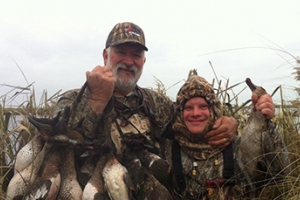Redfish Techniques in the Bird Foot of LA’s Delta
I’m fortunate enough of spend plenty of time in the marsh and, following 16 years of incredible success due to the help of great friends and industry colleagues, some solid techniques have emerged.
By Lew Carpenter
“It is one of the most diverse fisheries in the world and it offers anglers of all abilities a place to have one of the most memorable fishing experiences of their lives,” Jesse Simpkins, director of marketing, St.Croix Fishing.
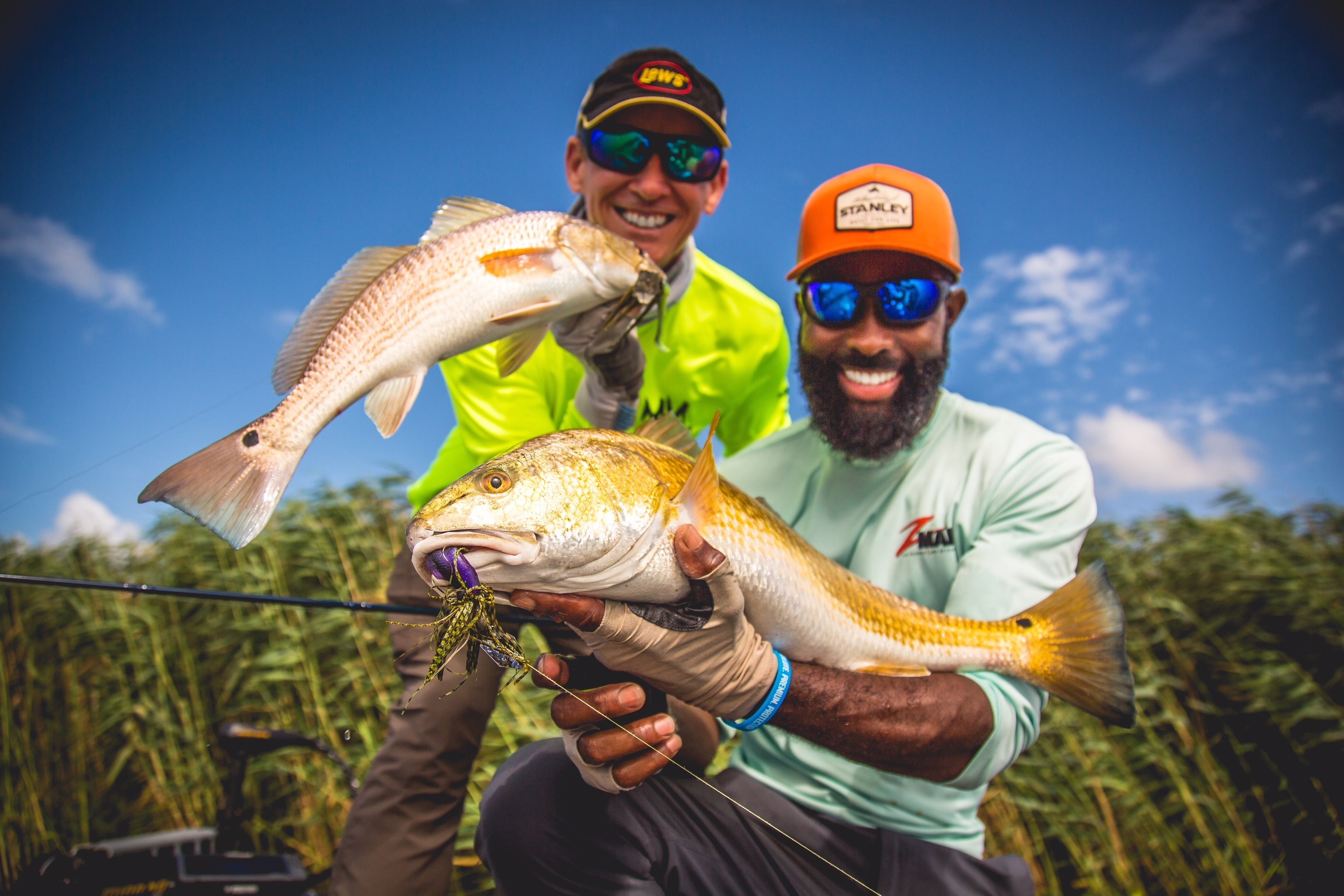
2017 Marsh Madness. Photo courtesy of Shane Clevenger/Z-Man.
Targeting redfish in the Mississippi River Delta is one of life’s great joys. Anglers lucky enough to spend time here are greeted with thousands of square miles of prime habitat for chasing this dynamic species. Its big shoulders, voracious appetite and tasty flesh make the redfish (Red Drum) one of the world’s great game fish. Those that hunt reds soon find the pursuit and harvest make for an addiction rarely forgotten.
I’m fortunate enough of spend plenty of time in the marsh and, following 16 years of incredible success due to the help of great friends and industry colleagues, some solid techniques have emerged.
In October, one week before Hurricane Nate crashed through the delta, I hit the water with anglers both new and old to the area. High winds put us off the mouth of the Mississippi at Southwest Pass, where we normally target massive schools of big reds. The roseau cane offered relief from the wind and epic, action-packed results.
“When red fishing in Venice, Louisiana, one of my favorite marshland vegetations to target are the roseau cane,” said Shane Clevenger of Z-Man Fishing Products. “Bait fish will hide in this cane to evade predators such as redfish, largemouth, sheepshead and flounder. Similar to the spartina grass I'm accustomed to in Charleston, South Carolina, the redfish will actually get up in the cane, chasing shrimp and other small bait. This can make sightfishing for them a blast as long as you know not only what to look for but how to present your bait.”
Clevenger explains that small baitfish will make tighter wakes while redfish will make a more substantial "V" wake while swimming, also known as a "push." He likes to look for these pushes along the edges of the Roseau cane and cast his Z-Man ChatterBait 5- to 6-feet in front of the tip of the "V" “As soon as your bladed jig hits the water start burning it back to the boat,” he said. “The sound and flash of the ChatterBait will drive the reds out and away from the cane so when they hit you can fight them in open water with less chance of breaking them off. Unlike the spookier reds we're used to seeing in Charleston, these south Louisiana delta reds can be re-targeted if they miss the bait the first time. Just like when fishing for largemouth, recast near where they first hit the bait and more times than not you'll find yourself in a skinny-water fight!”
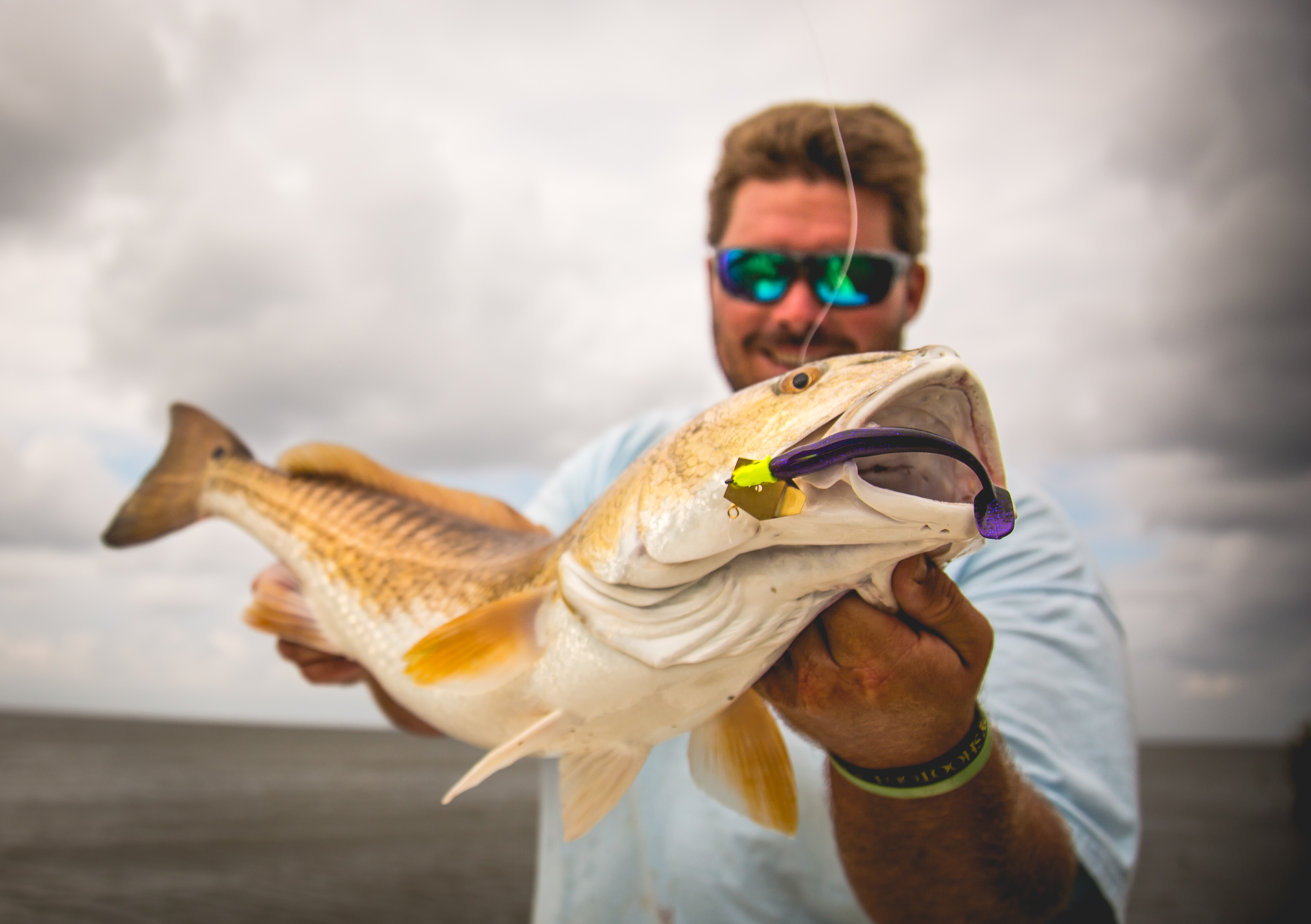
Modern iterations of the spinnerbait include this highly effective Z-Man Chatterbait, which provides action and sound to attract reds. Photo by Shane Clevenger.
When the tide is high and you're finding the fish to be a little more lethargic, often a larger profile bait is a overkill. This is an ideal time to downsize your tackle and throw a 3-inch grub. “This is where I'd go with a Z-Man 3.5-inch Swimmin' Trout Trick pegged to a 3/16th oz Trout Eye jighead,” Clevenger said. “Fried Chicken seemed to be a deadly color for us with a generously flaked, muted tan body and chartreuse tail. The contrast of the tail with the body and the oversized 3D eye on the jighead make it easy for reds to pick this bait out in the dingy water. As a bonus, as long as you don't break it off, you can fish this one bait all day due to the durability of Z-Man's ElaZtech.
“Remember, we're not fishing this bait as aggressive as the ChatterBait,” he continued. “With this smaller profile paddle tail, the key is casting as close to the edge where the water meets the cane and letting the bait sink. The tail on this bait has some of the best action of any paddle tail bait out there so while this bait sinks the tail is doing all the work for you. Once the bait rests on the bottom the buoyant ElaZtech material, common in all Z-Man soft plastics, will cause the tail to float up and undulate in the current. This perfectly mimics a shrimp or small minnow foraging in the mud and is irresistible to hungry predators. After letting it sit for a few seconds, give a small pop of the rod tip to hop the bait up a couple feet and let it sink once again. Nine times out of ten the fish will hit the bait on the fall.”
Pro Angler Brian Latimer agrees with those techniques and fished the shallowest canes he could find in the Redfish pass and Spanish pass area, yielding prolific days (see his video “Redfish Booty” for live action)
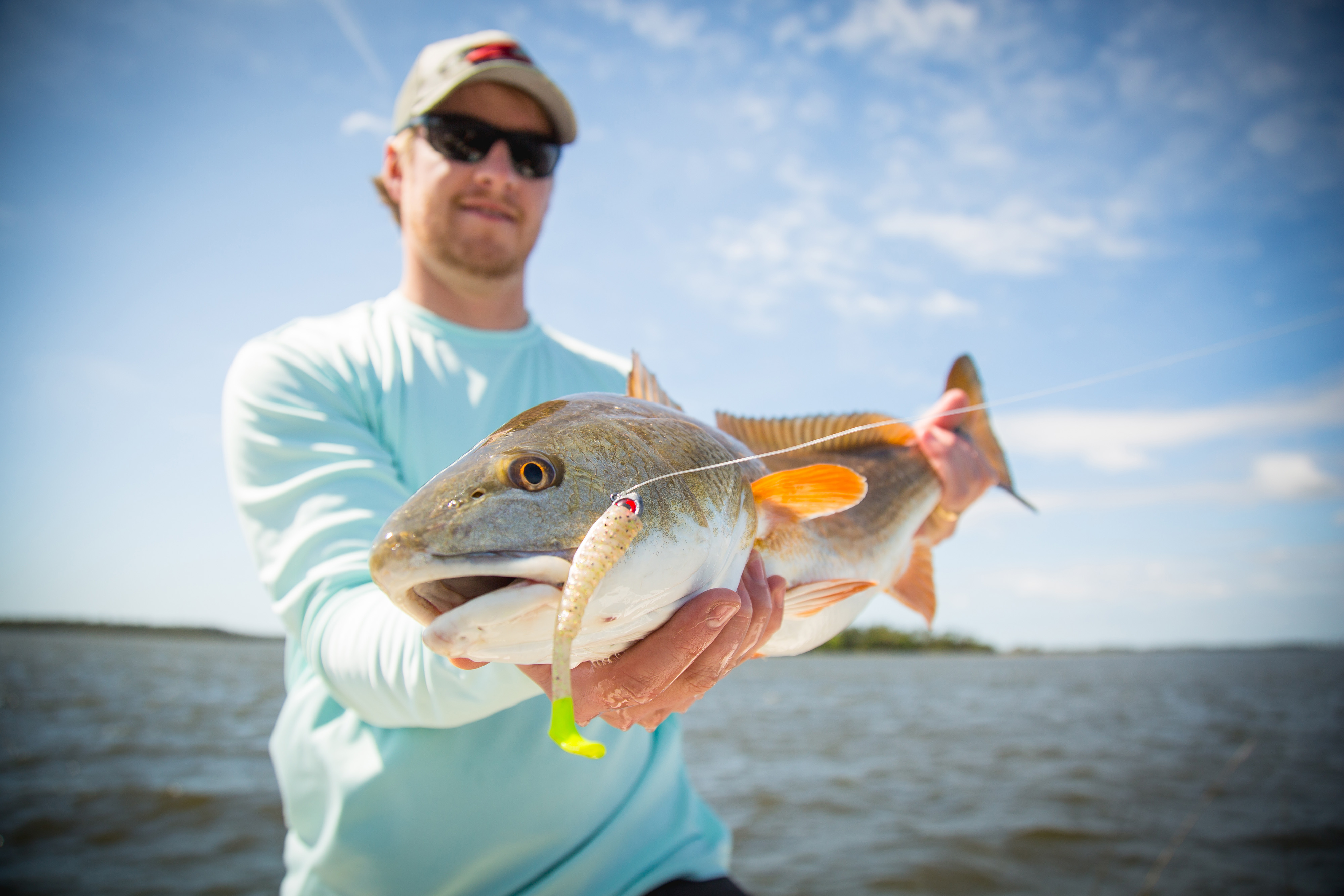
Fished without a blade, these Z-Man Swimmin’ Trout with Trout Eye jigheads fish well in dirtier water and have excellent action played on the drop and off the bottom. Photo by Shane Clevenger
“The key when blind casting was anywhere current was restricted by either a cane point or small guts leading to backwater ponds,” Latimer said. “I exclusively used a green pumpkin Z-man original chatterbait tipped with a purple demon Z-man minnowz. I tied my bait directly to Seaguar 50-pound flipping braid. I also sight fished a few reds using the same set up but letting the bait rest on the bottom.”
Great modern baits aren’t the only road to success, and old tried-and-true spinnerbaits with a black body or other dark patterns and chartreuse tail have brought plenty of fish to the boat, as well as targeted Rat-L-Trap crank baits.
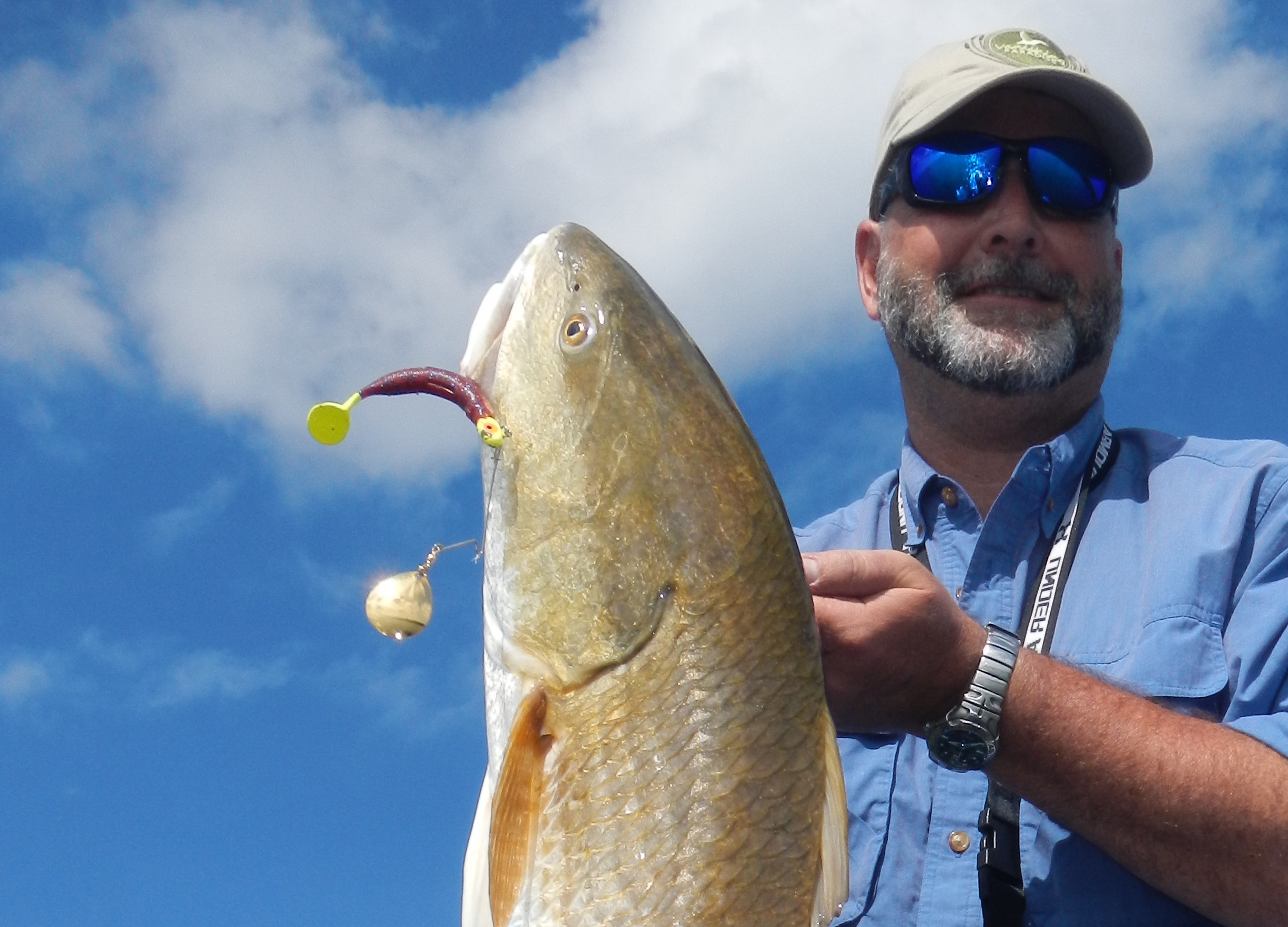
Tried-and-true spinner bait with a dark body and Colorado blade are tough to resist for active and curious reds. Photo by Lew Carpenter
As for fishing rods, I prefer a 7-foot bait cast model rated around 15- to 20-pounds that is both sensitive for pitching close to the cane and also powerful for taming those bruiser reds. I’ve been using a St. Croix rod like that for decades and currently the St. Croix Legend Tournament stick is perfect. As the saying goes, if I could only have one rod in the marsh…this is the one.
Pair that rod with a low profile or round bait cast reel, which all the reel manufacturers are making (think bass-fishing reels), loaded with today’s great mono or fluorocarbon lines from makers like Seaguar and you’ve got a perfect setup. Some folks feel if you’re casting crank baits it’s better to have some braided line (pulls from the cane easier….sometimes) so the treble hooks don’t nick through the mono during windy casts, but I have tended to simply pay attention to my line when using crank baits and cutting off nicked sections when I find them.
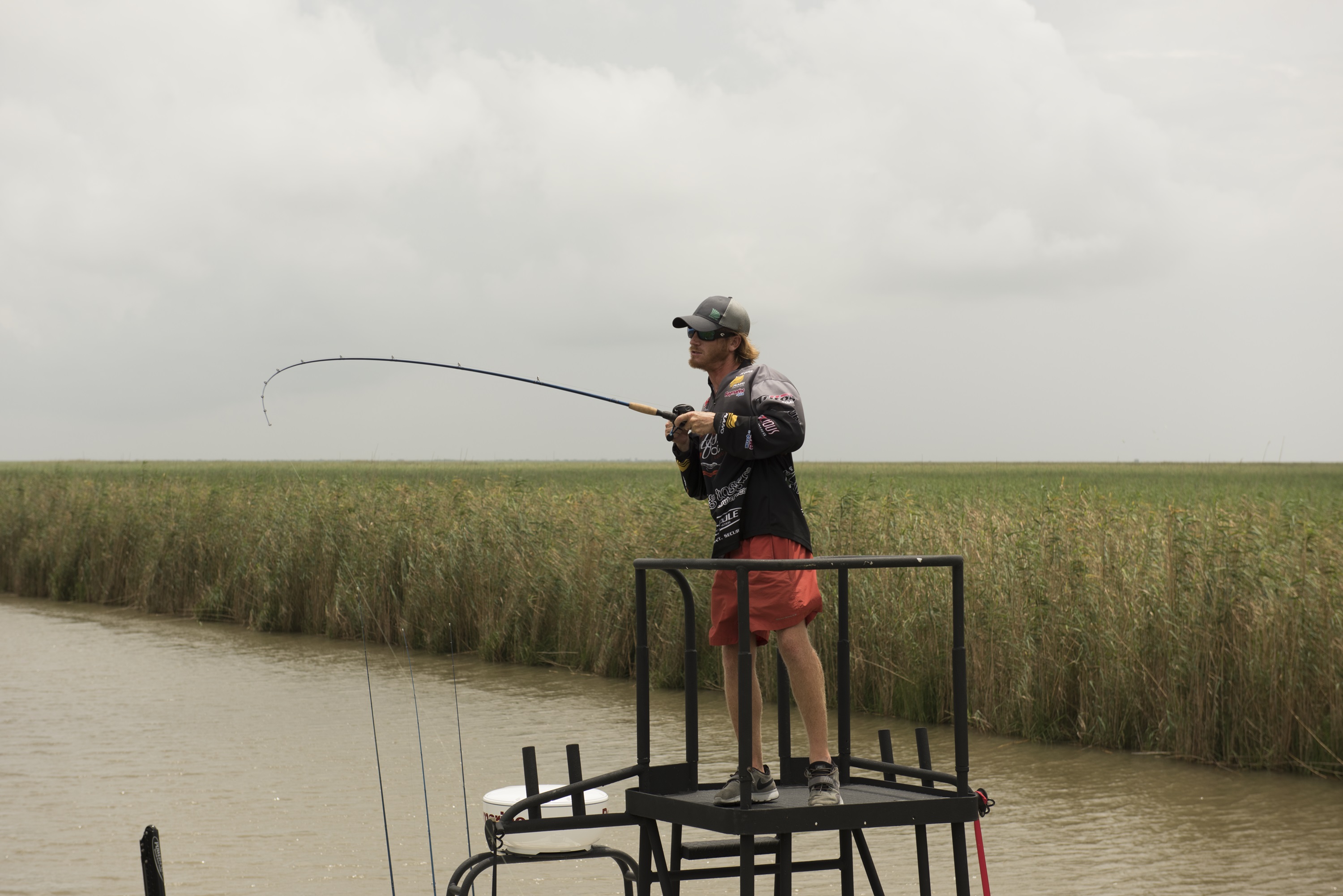
A powerful, sensitive 7-foot bait casting rod like St. Croix’s Legend Tournament stick is perfect for flipping, long casts and conquering shoulder reds.
I’m hard pressed to find a better place for wide-open fishing action like we have in the Louisiana marshes. It’s a place I journey to at least once a year. It’s also a place that needs to be both protected and restored. The loss of these wetlands on a daily basis is staggering. But I feel fortunate that great folks in the fishing and hunting community are paying attention and working hard to help reverse the loss of this world-class fishery and waterfowl habitat (11 million ducks and geese winter here, too).
Our group of anglers, entering 20 years of annual fishing together in these wetlands, is led by Eric Cosby of Top Brass tackle. Cosby has been an incredible advocate for wetlands conservation, allowing a conservation voice at the event, and by his personal commitment to wetlands restoration as an Advisory Council member for Vanishing Paradise and a veteran visitor to Washington D.C. to directly advocate to lawmakers. He creates a great nexus between conservation and the fishing industry, and Vanishing Paradise is grateful to be a part of a classic event that brings outdoor writers and industry folks together to experience this awesome fishery.
